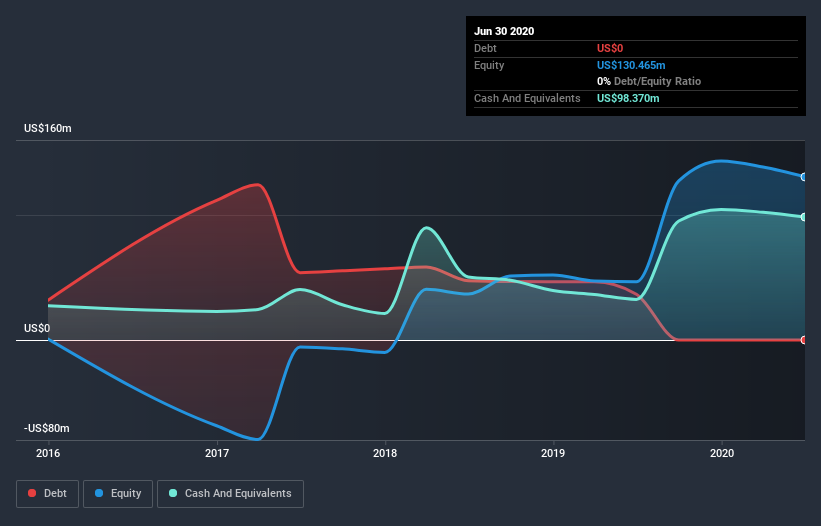We're Interested To See How Cardlytics (NASDAQ:CDLX) Uses Its Cash Hoard To Grow

Even when a business is losing money, it's possible for shareholders to make money if they buy a good business at the right price. For example, Cardlytics (NASDAQ:CDLX) shareholders have done very well over the last year, with the share price soaring by 112%. Nonetheless, only a fool would ignore the risk that a loss making company burns through its cash too quickly.
In light of its strong share price run, we think now is a good time to investigate how risky Cardlytics' cash burn is. In this article, we define cash burn as its annual (negative) free cash flow, which is the amount of money a company spends each year to fund its growth. Let's start with an examination of the business' cash, relative to its cash burn.
Check out our latest analysis for Cardlytics
Does Cardlytics Have A Long Cash Runway?
You can calculate a company's cash runway by dividing the amount of cash it has by the rate at which it is spending that cash. As at June 2020, Cardlytics had cash of US$98m and no debt. Looking at the last year, the company burnt through US$2.5m. So it had a very long cash runway of many years from June 2020. Notably, however, analysts think that Cardlytics will break even (at a free cash flow level) before then. In that case, it may never reach the end of its cash runway. The image below shows how its cash balance has been changing over the last few years.
How Well Is Cardlytics Growing?
Cardlytics managed to reduce its cash burn by 87% over the last twelve months, which is extremely promising, when it comes to considering its need for cash. And it could also show revenue growth of 19% in the same period. We think it is growing rather well, upon reflection. Clearly, however, the crucial factor is whether the company will grow its business going forward. For that reason, it makes a lot of sense to take a look at our analyst forecasts for the company.
How Easily Can Cardlytics Raise Cash?
There's no doubt Cardlytics seems to be in a fairly good position, when it comes to managing its cash burn, but even if it's only hypothetical, it's always worth asking how easily it could raise more money to fund growth. Generally speaking, a listed business can raise new cash through issuing shares or taking on debt. Many companies end up issuing new shares to fund future growth. By comparing a company's annual cash burn to its total market capitalisation, we can estimate roughly how many shares it would have to issue in order to run the company for another year (at the same burn rate).
Since it has a market capitalisation of US$2.0b, Cardlytics' US$2.5m in cash burn equates to about 0.1% of its market value. So it could almost certainly just borrow a little to fund another year's growth, or else easily raise the cash by issuing a few shares.
How Risky Is Cardlytics' Cash Burn Situation?
As you can probably tell by now, we're not too worried about Cardlytics' cash burn. In particular, we think its cash burn reduction stands out as evidence that the company is well on top of its spending. And even though its revenue growth wasn't quite as impressive, it was still a positive. It's clearly very positive to see that analysts are forecasting the company will break even fairly soon. Taking all the factors in this report into account, we're not at all worried about its cash burn, as the business appears well capitalized to spend as needs be. Taking an in-depth view of risks, we've identified 4 warning signs for Cardlytics that you should be aware of before investing.
Of course, you might find a fantastic investment by looking elsewhere. So take a peek at this free list of companies insiders are buying, and this list of stocks growth stocks (according to analyst forecasts)
This article by Simply Wall St is general in nature. It does not constitute a recommendation to buy or sell any stock, and does not take account of your objectives, or your financial situation. We aim to bring you long-term focused analysis driven by fundamental data. Note that our analysis may not factor in the latest price-sensitive company announcements or qualitative material. Simply Wall St has no position in any stocks mentioned.
Have feedback on this article? Concerned about the content? Get in touch with us directly. Alternatively, email editorial-team@simplywallst.com.



